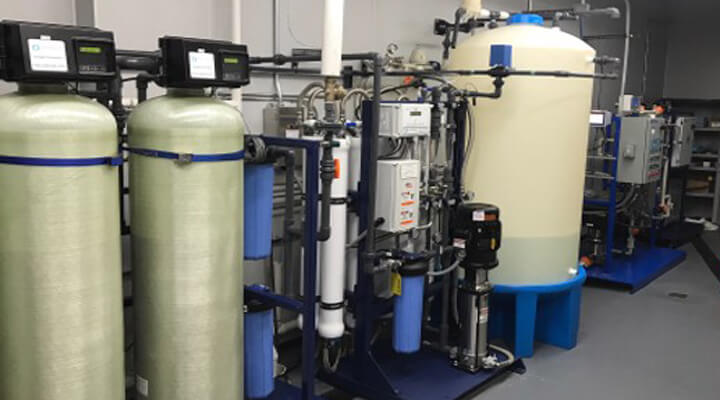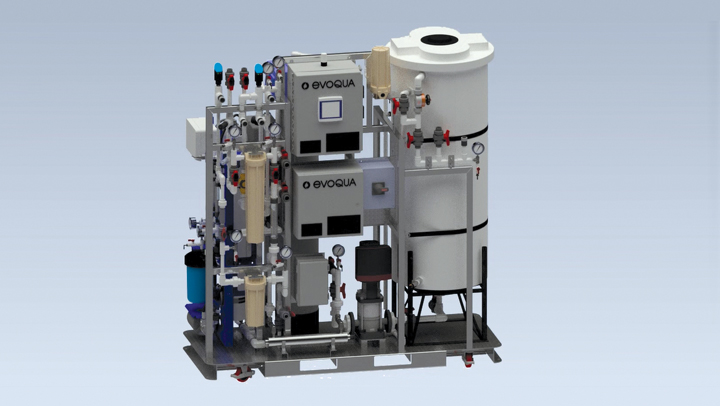Are you ready for AAMI ST108?
The Association for the Advancement of Medical Instrumentation (AAMI) has developed and published a new standard, ANSI/AAMI ST108:2023 - Water for the Processing of Medical Devices. This new standard replaces AAMI TIR34:2014.
ST108 has a strong emphasis on proper water system design, monitoring, testing and maintenance. Unlike TIR34, which offered guidelines around water quality used for medical device reprocessing, ST108 has binding requirements for sterile processing departments. Thus, it is important that you understand this new standard and the effects of water quality on medical device processing.

Adverse Effects of Poor Water Quality
Water impurities can have adverse effects to medical device processing, including:
- Adverse effects to the PRODUCT:
- Corrosion, pitting, scaling
- Biomass build-up
- Increase microbial load or endotoxin content
- Adverse effects to the PROCESS:
- Decreased effectiveness of detergents
- Degradation of the water system (biofouling or scaling)
- Adverse effect to the PATIENT:
- Infection
- Toxicity
It is important that sterile processing personnel understand the water quality issues that can contribute to adverse patient events and be aware of some of the gross indicators that suggest that there may be problems with the water quality.
What is ANSI/AAMI ST108?
ANSI/AAMI ST108:2023 is the new industry consensus standard for selecting the water quality, testing and monitoring necessary for the reprocessing of medical devices and surgical instruments. Key differences and updates from TIR34 include:
- Requirement for the facility to establish a multi-disciplinary team responsible for water quality and the water management program
- Expansion of water quality types to include Steam
- Establishment of expanded water quality criteria for system performance qualification
- Routine water quality monitoring requirements at both the water generation system and at departmental points-of-use
Categories of Medical Devices
| Device Category¹ | Definition | Examples | Minimum Disinfection Level |
|---|---|---|---|
| Critical | Device that enters sterile tissues or the vascular system | Surgical instruments, transfer forceps, cardiac catheters, biopsy forceps, etc. | Sterilization |
| Semi-critical | Device that comes in contact with non-intact skin or mucous membranes | Non-invasive, flexible fiber optic endoscopes, endotracheal and aspirator tubes, respiratory therapy equipment, etc. | High Level Disinfection |
| Non-critical | Device that comes in contact with intact skin but not mucous membranes | Bedpans, reusable anesthesia masks, blood pressure cuffs | Low Level or Intermediate Level Disinfection |
1 As defined by the Spaulding Categories (CDC, 2008)
Categories of Water Quality for Medical Device Processing
AAMI ST108 defines three categories of water quality for medical device processing:
- UTILITY WATER – water that comes from the tap that may require further treatment
- Used for flushing, washing, and rinsing of medical devices
- CRITICAL WATER – water that is extensively treated to ensure microorganisms, inorganic and organic materials are removed
- Used for final rinse or steam generation
- STEAM – water that is heated via a boiler or steam generator until it changes from liquid phase to vapor phase. Steam can be fed from a central location within the hospital such as a boiler plant or created via a steam generator within a sterilizer.
- Used for sterilization of medical devices
How Should Sterile Processing Departments and Facilities Implement AAMI ST108?
There are four steps sterile processing departments and hospital facilities teams should take to achieve critical water quality.
Water Quality Assessment
Tap water from a public utility source should be analyzed by an accredited facility with expertise in water quality to determine whether the water requires treatment and, if so, what type of treatment.
Implementation of Water Treatment Plan
If treatment is required, personnel should ensure that treatment processes are implemented to provide the type of water quality needed for the medical device processing needs of the facility.
Assurance of Proper Water Quality
Process water used in medical device reprocessing areas should be audited to determine whether water of the correct quality is being used for the devices being reprocessed in each area. If not, the water treatment should be modified as necessary.
Ongoing Water Monitoring
Where applicable, routine and ongoing monitoring procedures should be established to ensure that the treated water is of adequate quality for medical device reprocessing. Water maintenance personnel and device reprocessing personnel should communicate effectively to ensure that action is taken when inadequate water quality is detected.
" The importance of monitoring water quality to prevent problems with microbial proliferation cannot be overemphasized "
Partner with Evoqua to prepare for AAMI ST108
As a leading provider of water treament solutions with world-class water expertise, Evoqua is ready to assist you with preparing for the new AAMI ST108 standard. We can provide a free evaluation of your water system with recommendations to meet the new standard.
Evoqua’s Vantage® SPD and Vantage® ASC Solutions are specifically designed to produce water that meets AAMI water quality specifications by integrating water purification, distribution, and data monitoring for reliable performance. This ensures consistent water quality for your sterile processing department, maximum uptime, and water system performance data for accreditation surveys*.
*Water system performance data only available when purchased with a qualifying service package.


